Aero optimisation: you or the bike?
The characteristics of aero road bikes are beginning to transcend all genres - but could you adjust your position for bigger gains?


Weight weenies move over. There’s a new metric to obsess over in this decade, and it’s cheating the wind.
With the UCI weight limit sitting stubbornly at 6.8 kilograms, and modern bikes capable of coming in far lower, manufacturers and consumers alike have switched their focus quite substantially in the past few years to hone in on reducing aerodynamic drag.
It’s not even dedicated aero bikes getting this sort of treatment now. Take the Specialized family – the lightweight Tarmac race bike now takes major cues from the Venge aero model, and the most recent endurance targeted Roubaix has been optimised so that it outperforms its feathery sibling in the windtunnel.
This trickle down of aero optimisation is being seen almost across the board at the bigger brands – case in point, Giant’s new TCR with a claimed 8 watt saving at 40 kilometres per hour thanks to the use of tubing shapes taken from the Propel aero road bike. Then, there's the aero touches to 3T's Exploro RaceMax gravel bike.
The characteristics of aero road bikes are beginning to transcend all genres and the arms race shows no sign of stopping any time soon. Of course, every watt adds up and technology has to keep progressing (unless we'd all prefer to be riding Boneshakers or Penny Farthings?) - but where can we, as individuals, make the greatest savings?
The arms race for optimisation

“Our product development model is to push the limits as far as is practical… with the intention of trickling the technology developed down to other models and also across product lines,” says Design Engineer at Cervelo, Robert Pike, “aerodynamic developments from our [aero bike the] S5 informs more modest aero design solutions for our Classic Road models - not to mention gravel bikes - just like weight and stiffness optimization concepts from the R5 inform design methods for our aero bikes,” he said.
Whilst aero bikes with their distinctive tube shapes, integrated cockpits and hidden clamps are now a mainstay in the range of any brand looking to appease the masses, it was Cervelo that kicked the trend off with the ‘Soloist’ in 2012.
“[To keep moving forwards] we analyze, develop, and iterate designs using CFD, then validate in the tunnel. And repeat. This cycle is repeated several times through the development process as we converge on an optimal design,” says Cervelo’s brand manager, Anton Petrov.
However, even bike brands don’t hide the fact that the greatest gains come from the way the rider is positioned on the bike. The bike is in effect the cherry on top - the marginal gains we go to when we've made ourselves as fast as possible.
>>> Could you benefit from narrower handlebars?
“The rider is and always will be the biggest contributor to overall system drag. And the easiest thing a rider can do to reduce drag is reduce their frontal area... Next to rider position, the wheels make the biggest difference in reducing system drag,” Petrov says.
Putting the rider first
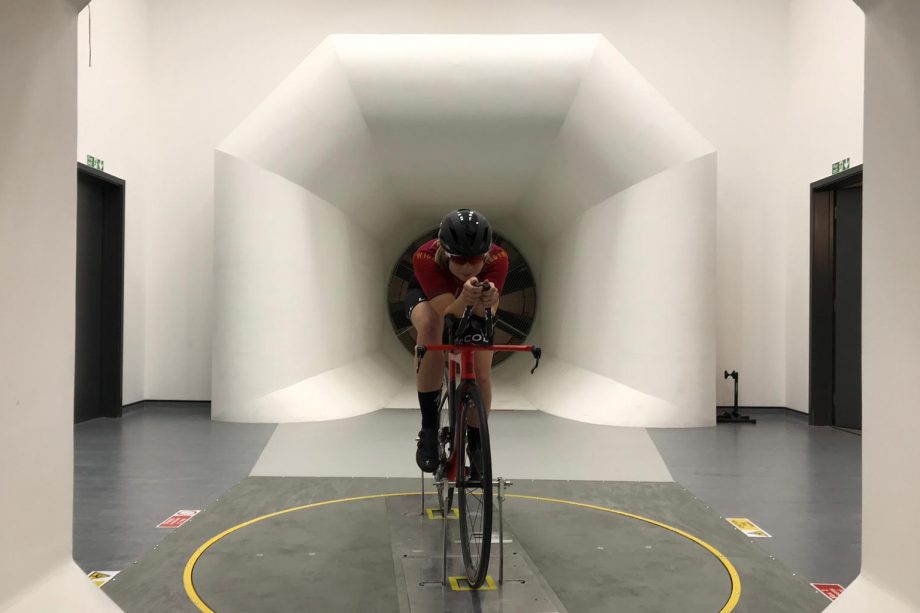
The degree to which a rider is battling the wind is represented as ‘Coefficient of Drag Area’ (CdA), a combination of frontal area and the drag coefficient or the ‘slippiness’ of the air flow over the rider and bike. The lower the CdA number, the faster a person will go. As that number gets smaller, the greater the effect the bike will have on the overall equation.
“We focus the majority of a client’s wind tunnel time on the rider themselves - their shape, position and posture on the bike – along with the flow of air over their shape - which is also influenced by the clothing and helmet,” says Jamie Pringle, Head of Science and Tech Development and Boardman Bikes.
But as the margins get smaller, he explains, the bike becomes more important.
“Take a road rider and bike combined, in fairly average and typically unaerodynamic road position. The overall CdA will be high, and bike itself may be only 15 per cent of the total drag,” Pringle says. Since it’s relatively easy to make large gains via optimising the other 85 per cent, the bike won’t take centre stage in a case like this.
“But for the road rider with a well-optimised position, their overall CdA is much lower – but the equipment itself hasn’t changed, so that bike can become 20 per cent of the total system drag. Apply that to a time trial rider, where the lower and more narrow body position is inherently more aerodynamically favourable and the clothing and helmet optimised for the event, the CdA numbers drop further still and that same bike might now become a third of the overall drag. As we move forward, and with CdA values even lower in very exceptional [time trial] riders, then it could be argued that the bike is now the limiting factor once again.”
>>> How much faster is a time trial bike really?
Looking at time trial positions specifically, when I headed down to the Boardman Performance Centre last year, working with Pringle we found that at 40kph, the difference between me riding the brand’s AIR road bike with clip on bars, vs the TTE time trial bike (with my position remaining the same across both, helped by an outline drawn on the windtunnel floor) was only 3 watts. Sped up to 50kph, this increased to 21watts.
On a road bike, swapping between the tops and drops saved me 38 watts whilst optimising the position of the clip on bars saved 17 watts when compared with the initial position we clamped them on at.
Dress for your speed
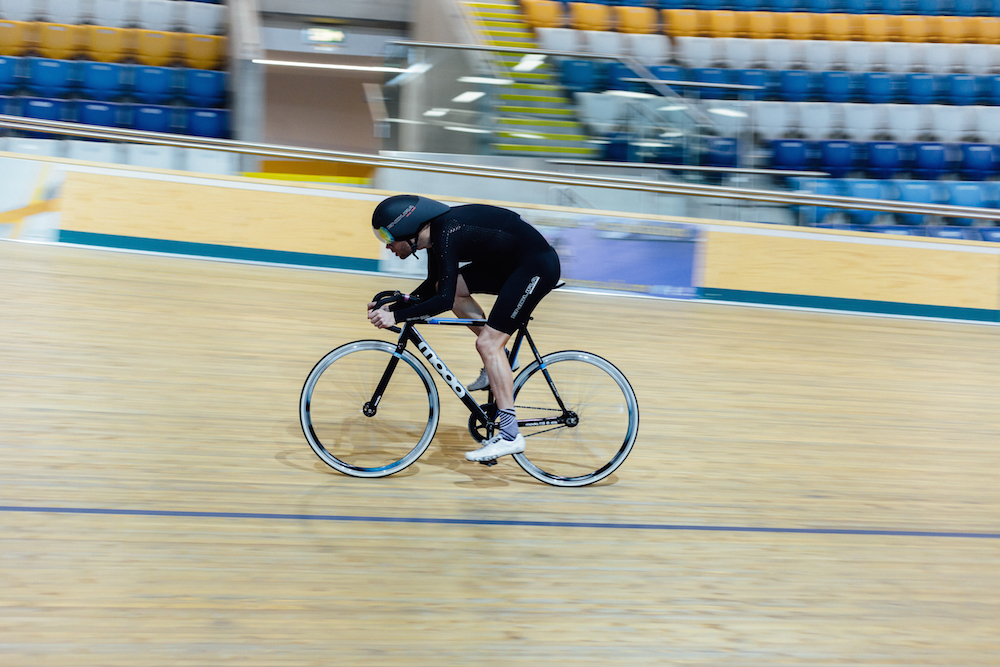
The effect of speed on drag is something Endura thought about deeply when developing its skinsuit range, alongside Drag2Zero’s aerodynamicist, Simon Smart. They concluded that the ideal clothing choice is affected by the rider’s pace as well as body shape and even wind angle.
Endura’s Martin Steele said: “Suits optimised for time trialists riding in an aggressive position at 50kph aren't necessarily the fastest suit for a sportive rider on a road bike averaging 35kph. A lot of the aero clothing on the market is tuned to a certain speed and all the figures that come out are for that speed only. The unfortunate thing is that out on the road, in time-trials, and even in sportives, the reality is that you’re not riding at one speed - you ride at quite a range.”
The brand now offers a range of D2Z kit, with the Encapsulator skinsuit (£429.99) suited to those riding at 46-58kph, whilst the Road Suit (£329.99) is tailored to a more modest 32-50kph.
The number of riders likely to shell out for a skinsuit wardrobe suited to each occasion is no doubt going to be limited, but Endura’s work certainly feels like a milestone on route to what could one day be the new standard.
>>> Aere aerosensors the tech of the future?
Another area that’s been shown to vary greatly between individuals is helmet choice. Notio make aerosenors that riders can use to gain real time CdA data, and the brand works with World Tour teams to guide their optimisation process. Notio’s Ed Collins told us: “We see some pretty big differences [between riders] on helmets as body shape, size, mobility varies so certain helmets and how they fit with a rider will be individual so testing helmets is important. We have also seen big advances in clothing material and this is an ever-evolving process but nevertheless it’s also an area for some big gains too.”
What happens at an optimisation session?

Dan Bigham and his team at Wattshop work with amateur athletes right through to pros – including most recently the Danish team, who they assisted ahead of their World Record beating Team Pursuit performance. Here, Bigham explains what you can expect at an aero testing session. Many testing sessions happen indoors, in a velodrome. That's because outdoors there are more variables to take into account which can skew the data.
"The first step of the optimisation process is capturing as much information about the athlete as possible. We ask them to complete a thorough questionnaire that digs into many aspects of their performance.
"The aero test sessions themselves are primarily held at Derby Arena (The Derbados Superdrome), but we do test worldwide. Our software and hardware are fully portable, which makes life a lot easier by not having to be tied to a specific test facility.
"For the vast majority of clients, we spend most time during tests working through positional variations. Life would be easy if this were a cookie cutter approach of up, down, in, out and away you go faster, but the nature of aerodynamics is that the flow structures around each person’s unique body shape are also unique and therefore it takes a combination of experience and experimentation to figure out what works for each athlete. Once we are happy with where we are from a positional perspective, we then look at helmets and other equipment options such as wheels, hydration and nutrition storage.
"Helmets are quite an annoying item to deal with aerodynamically -they’re a bit “chicken and egg”. Do you go through helmets first, take the helmet that is fastest in the rider’s baseline position, and then optimise, possibly missing out on a faster position with a different helmet? Or do you go through positional changes first, and then through helmets, possibly missing out on a faster helmet in a different position? This is just one example of the aerodynamic interactions that pose challenges. There is a near infinite number of combinations that you could test, so it comes down to pragmatism and making a judgement call based on where the athlete is in their baseline position. Fortunately, I’ve tested a lot of athletes so have a good feel for what’s worth testing and what’s not which means a more focused use of the time available.
"I find it is typical that once you start aero testing, you quickly become so intrigued and borderline addicted to the process. You often leave a session questioning what else you could test or change, it’s a bit of a perpetual cycle and you begin to look at and notice every little detail and think about how it might impact on you aerodynamically. You can improve an athlete a huge amount in two hours, as well as seeding many new ideas and thoughts for them to go back home and work on. Quite often clients will rebook for a second, or third, fourth or fifth test quite soon after, and come back even more prepared with a greater interest, understanding and passion for the process."
How does bike, rider and equipment fit together?
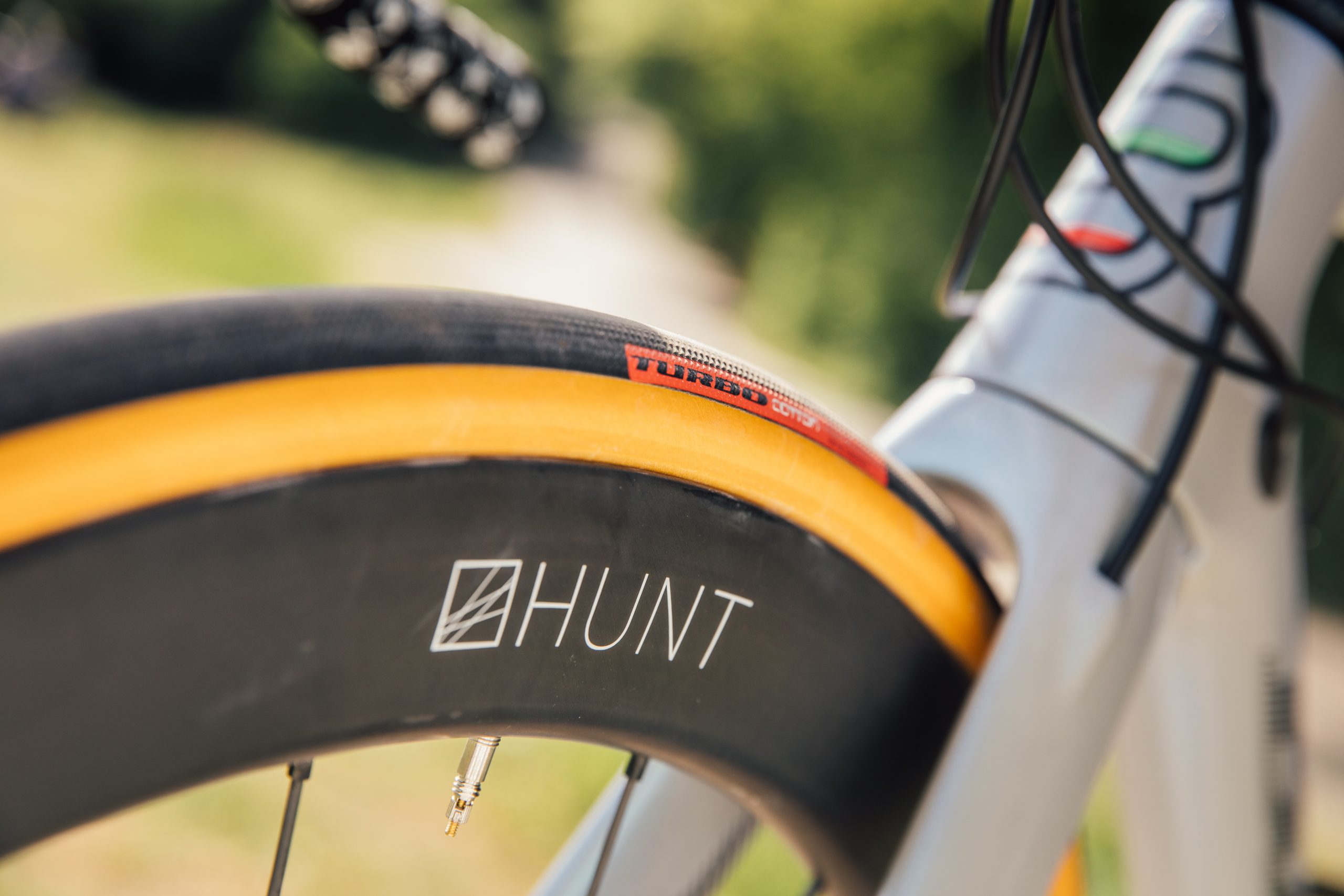
After the rider (and their clothing), wheel and helmet choice represent the next two greatest areas where cyclists can make gains. Most wheel brands test their product in a wind tunnel, alone – not attached to a bike. But surely that means the data is redundant? Or maybe not. Former aerospace engineer turned engineering and product manager at Hunt, Luisa Grappone explains.
“Most wheel brands test their product alone – not on a bike. Wheel only tests give wheel brands a better indication on the product’s aerodynamics, which is important from a product development point of view. It is a kind of isolating the system and taking any noise off in order to focus on the rim profile and get the most aero shape.
>>> How to choose the perfect rim depth for you
“Wheels together with tyres are the leading edge when the airflow hits the overall system of the bicycle. However as the airflow moves backwards it soon interacts with the frame and mainly with the fork blades first.
“The shape of these blades is important. The more the fork has an aero shape, close to an airfoil shape, the more the overall system gets aero gains.
“After hitting the fork, the airflow passes through the rear side of the front wheel and hits the frame. The way the down tube of the frame is designed affects the aerodynamic performance of the system a lot, but also the cockpit, so the handlebar together with the stem play a very important role.
“Nevertheless, from a wheel point of view, if a wheel model comes out to be the most aerodynamic, it likely will still be the most aerodynamic when changing any of the factors above.”
The alternative to this might be testing every bike with every wheel and tyre combo - but we've yet to find a brand that has the cash to stump up for this level of windtunnel time.
Pringle notes a similar focus on interaction between bike and body: “There is a small but significant interaction of the bike on the body and vice versa, that’s particularly seen in the air coming off the front wheel and forks and how it flows onto the legs and hips, and to a lesser extent the air flow off the handlebars or TT extensions and onto the arms, head and torso. The clever bit is in understanding this as a whole system.
“Even with advanced capabilities of a wind tunnel and CFD, being able to tame these incredibly complex flow interactions to design kit around them is a hugely impressive ask. What we do at the Boardman Performance Centre is work predominantly with the human part of that ergonomics equation, and that requires a skilful aerodynamicist who also understands the biomechanics of a rider operating at the limits of their physical capabilities.”
“It certainly helps if the rider can present less frontal area to the wind by adopting a lower torso and narrower arm position, but it’s not simply a question of lower is faster. In fact, we find that it’s the coefficient of drag aspect part of the equation - the air flow characteristics - that requires more thinking but also offers most potential. Indeed, there’s only a certain amount you can do to fold a rider into an ever-smaller frontal area before it negatively impacts on their physical capabilities.
"For a rider with a good starting position, we find that altering a rider’s torso angle to change their frontal area may have only a relatively small impact on their overall drag. More often than not, we find ourselves raising the rider’s cockpit, and any aero losses due to increased frontal area can be offset and more by other favourable changes that improve air flow over their body. Most importantly, with a higher position those changes are more achievable on the road, helping protect or even improve effectiveness of force production at the pedal, and similarly with saddle comfort.
"It’s a fine balancing act of power, efficiency and aerodynamics. At the Boardman Performance Centre, we combine our aerodynamic optimisations with a biomechanical investigation for these reasons.”

Thank you for reading 20 articles this month* Join now for unlimited access
Enjoy your first month for just £1 / $1 / €1
*Read 5 free articles per month without a subscription

Join now for unlimited access
Try first month for just £1 / $1 / €1
Get The Leadout Newsletter
The latest race content, interviews, features, reviews and expert buying guides, direct to your inbox!
Michelle Arthurs-Brennan the Editor of Cycling Weekly website. An NCTJ qualified traditional journalist by trade, Michelle began her career working for local newspapers. She's worked within the cycling industry since 2012, and joined the Cycling Weekly team in 2017, having previously been Editor at Total Women's Cycling. Prior to welcoming her first daughter in 2022, Michelle raced on the road, track, and in time trials, and still rides as much as she can - albeit a fair proportion indoors, for now.
Michelle is on maternity leave from April 2025 until spring 2026.
-
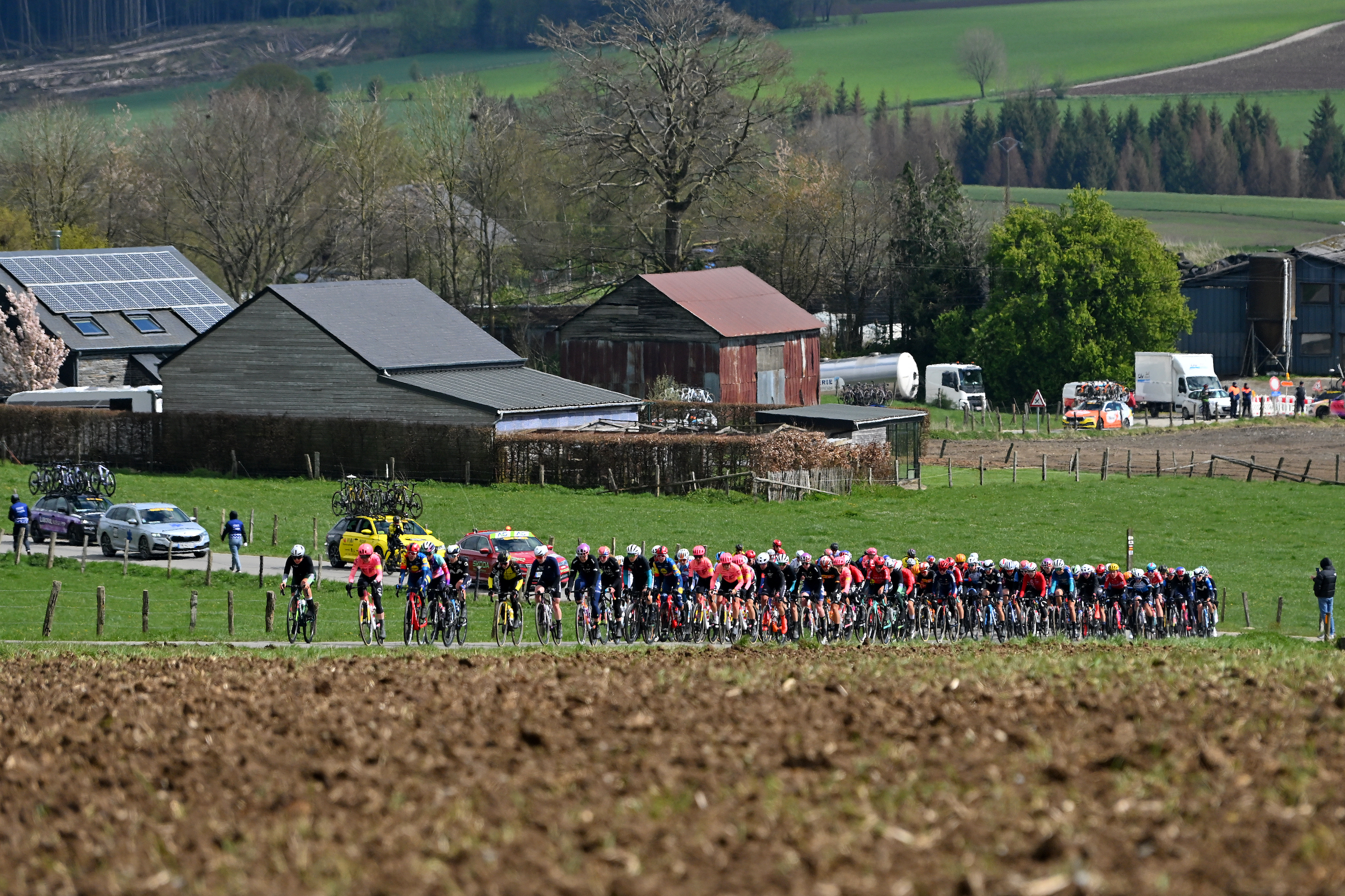 I rode the full course of Liège-Bastogne-Liège and it opened my eyes to the beauty of this under-appreciated race
I rode the full course of Liège-Bastogne-Liège and it opened my eyes to the beauty of this under-appreciated raceFlanders and Roubaix have been and gone. Forget about them – some of the most epic racing of this Classics season is on the horizon
By James Shrubsall
-
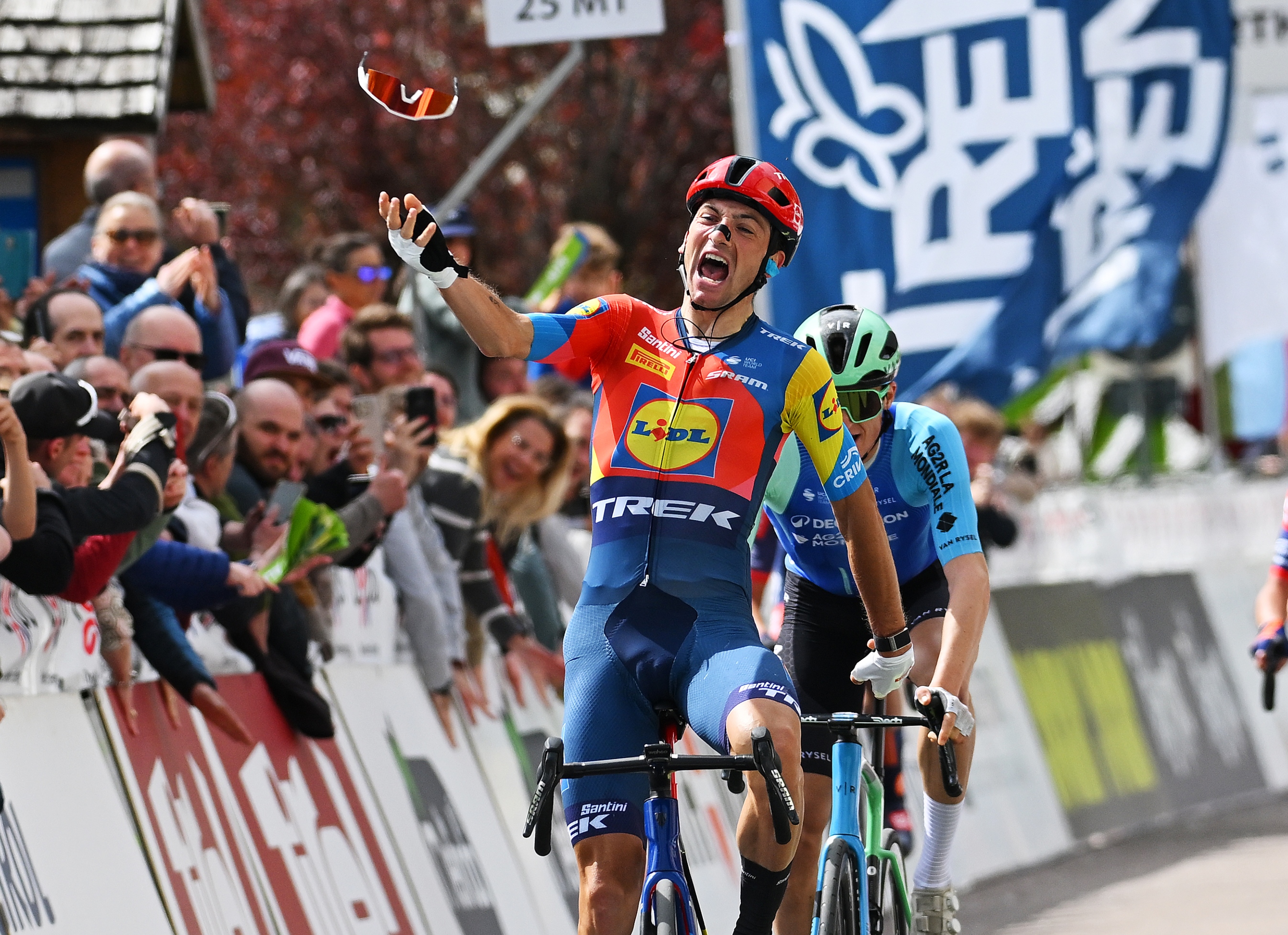 Sunglasses brand 100% pledges to pay Giulio Ciccone's fine for throwing his shades
Sunglasses brand 100% pledges to pay Giulio Ciccone's fine for throwing his shades100% says "this one's on us" after Italian charged 250 Swiss Francs at Tour of the Alps
By Tom Davidson